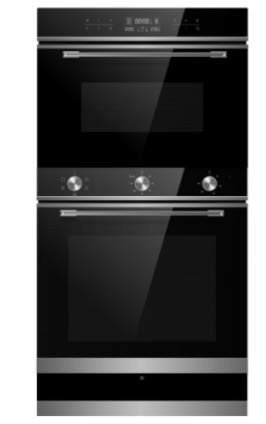The Ultimate Guide To Hobs And Ovens

Understanding Hobs and Ovens: A Comprehensive Guide for Cooking Enthusiasts
The kitchen is frequently considered the heart of the home, where culinary creations come to life. Two essential parts of any kitchen are the hob and the oven. While they are both vital for food preparation and cooking, numerous homeowners might not completely comprehend the differences, performances, and numerous types offered in the market today. In this short article, we will explore these devices in information, helping you make notified decisions for your culinary requirements.
Table of Contents
- What is a Hob?
- 1.1 Types of Hobs
- 1.2 Benefits of Different Hob Types
- What is an Oven?
- 2.1 Types of Ovens
- 2.2 Benefits of Different Oven Types
- Choosing the Right Hob and Oven for Your Kitchen
- Regularly Asked Questions (FAQs)
- Conclusion
What is a Hob?
A hob, typically called a cooktop, is a cooking surface area that you put cookware on to prepare food. Cooker Hob And Oven features a variety of heating components and is regularly installed on countertops. In modern-day kitchens, hobs come in different designs, technologies, and performances.
1.1 Types of Hobs
There are several types of hobs available in the market:
| Type | Description |
|---|---|
| Gas Hob | Uses gas burners for cooking, using precise temperature level control. |
| Electric Hob | Operates utilizing electrical heating aspects, commonly seen in solid or glowing forms. |
| Induction Hob | Utilizes electromagnetic fields to heat pots and pans directly, promoting energy performance. |
| Ceramic Hob | Features a smooth glass top, utilizing electric coils below the surface area. |
| Strong Plate Hob | Standard electric hobs with exposed metal plates that warm up. |
1.2 Benefits of Different Hob Types
Gas Hobs:
- Quick cooling and heating.
- Visual flame control for precise cooking.
Electric Hobs:
- Even heating; suitable for simmering and boiling.
- Easy to clean up, particularly flat surface areas.
Induction Hobs:
- Energy-efficient as only the pot heats up.
- Safety features, such as automated shut-off.
Ceramic Hobs:
- Attractive aesthetic appeals with a smooth surface.
- Even surfaces for simple cleaning.
Solid Plate Hobs:
- Cost-effective and resilient.
- Great for basic cooking requirements.
What is an Oven?
An oven is a kitchen appliance used for baking, roasting, and broiling food. Ovens can be standalone units or built into kitchen cabinetry, supplying different cooking approaches that can improve or change active ingredients.
2.1 Types of Ovens
Similar to hobs, there are several kinds of ovens, each with its advantages:
| Type | Description |
|---|---|
| Conventional Oven | Operates with heating aspects, best for baking. |
| Stove | Utilizes fans to circulate hot air, cooking food uniformly and rapidly. |
| Microwave | Cooks food utilizing electromagnetic radiation; ideal for reheating. |
| Steam Oven | Utilizes steam to prepare food, protecting wetness and nutrients. |
| Wall Oven | Built into the wall, offering convenience and visual appeal. |
2.2 Benefits of Different Oven Types
Conventional Ovens:
- Simple to use without any complicated settings.
- Versatile for numerous cooking methods.
Convection Ovens:
- Faster cooking times due to air blood circulation.
- Boosted browning and crisping for baked goods.
Microwave Ovens:
- Quick cooking or reheating of food.
- Energy-efficient for low-volume cooking.
Steam Ovens:
- Health-conscious cooking that retains nutrients.
- Excellent for baking bread and cooking veggies.
Wall Ovens:
- Convenient placement; conserves space.
- Less bending required to gain access to cooking meals.
Choosing the Right Hob and Oven for Your Kitchen
When picking a hob and oven, factors such as space, cooking design, and personal preferences need to be considered. Here's an easy guide to help you select:
Factors to Consider
- Cooking Needs: Evaluate your cooking routines. Do you often bake, or is stovetop cooking more widespread?
- Space Availability: Measure your readily available kitchen area. Some hobs or ovens may need more space than others.
- Fuel Type: Decide in between gas and electric, based on accessibility and individual preferences.
- Budget plan: Determine what you're prepared to spend and find options within that variety.
Quick Tips
- Prioritize Efficiency: Look for energy-efficient models to lower long-lasting costs.
- Check out Reviews: Explore user reviews to collect opinions on efficiency and dependability.
- Consult Professionals: Seek guidance from kitchen design professionals when preparing your design.
Frequently Asked Questions (FAQs)
1. What is the distinction in between a hob and an oven?
A hob is a cooking surface typically for stovetop cooking, while an oven is an enclosed area utilized for baking, roasting, and broiling food.
2. Can I utilize any pot on an induction hob?
No, induction hobs need magnetic cookware. Stainless steel and cast iron pots work, however non-magnetic products like aluminum won't.
3. How do convection ovens vary from traditional ovens?
Convection ovens utilize fans to circulate hot air for even cooking, whereas standard ovens do not have this function.
4. Is it possible to have both a hob and oven as a single system?
Yes, there are variety cookers that integrate a hob and an oven within one device, using a thorough cooking option.
5. How do I tidy my hob and oven?
Many hobs and ovens have advised cleansing approaches depending upon their materials. It is recommended to consult the manufacturer's instructions for the best practices.
Understanding the differences between hobs and ovens is essential for anyone aiming to enhance their kitchen space or improve their cooking skills. By knowing the numerous types, their advantages, and how to select the best ones for your requirements, cooking can become a more satisfying and efficient experience. Whether you are an experienced chef or a beginner cook, the right combination of hob and oven can elevate your cooking productions to new heights.

